On Thursday morning, April 30, 2015, I took an early-morning taxi to the Cruz Del Sur bus station. Soon I was off on my long, all-day bus ride from Lima to Trujillo.
The first part of this post documents my bus journey, followed by photos from my two full days of taking tours in the Trujillo area. Among my visits were places like the ruins of Chan Chan, the beach town of Hanchaco, the ruins of “Huacas de Moche” (Temples of the Moche), “Huaco Arco Iris” (rainbow temple), and a stepping-horse show.
This post includes 148 photos in total, with detailed story-like narratives describing the adventures.
As usual, the photos in this post are thumbnail images. Please click on any photo to enlarge it. The thumbnails leave much to be desired as far as colors and resolution – plus the thumbnails clip all of the edges. I use thumbnails for the post itself, because it gives people an opportunity to get a summary glimpse without downloading huge amounts of data for the high-res photos.
CLICK ON ANY PHOTO TO ENLARGE TO HIGH RESOLUTION
I had another front row seat on the second floor. This one, however, had very dirty windows and a large decal that blocked some of my view.
I giggled with non-surprise as our bus spent more than an hour and a half in traffic jams, just trying to make it trough Lima to another bus terminal on the edge of town. Even in the middle of a busy freeway, street vendors prowl between traffic-jammed cars, trying to sell their wares.
The traffic was extremely congested, with many drivers not sticking to any particular lane.
A neighborhood on the side of this hill.
Finally, we are cruising along the Pacific ocean, headed north … and the scenery is more of the desolate, dry sand dunes.
Sorry … lots of glare on these very scratched up and dirty windows.
The road was like this for much of the way.
In places, we even had four lane divided highways … but the bus still kept the speed at around 55 mph or less.
Toll stations like this are all over the Peruvian roads. I have seen them on the way to Lake Titicaca, and throughout my travels of the last few weeks.
Finally, a slight change in scenery. There are some areas with water and farm fields.
Our bus was quite delayed. I was expecting to be in Trujillo well before sunset. I never like to travel after dark to a new, unfamiliar city.
Instead, I was treated to a sunset on the bus, and I learned that I could easily get to my hotel after dark. I stayed in a small family-run hostel just about six blocks from the Plaza de Armas.
Rather than taking guided tours in Trujillo, I decided to try taking local transportation for everything. The woman who owns the hostel gave me fairly accurate instructions on where to find my bus and/or minivan, and where to get off.
Things went quite smoothly. Early in the morning of May 1, 2015, I stood on the street just a block from my hostel. A few minutes later I was on a crowded minivan (very dirty and beat up) headed to Chan Chan – a large set of ruins on the outskirts of Trujillo.
These yellow flowers caught my eye as I walked near the visitor’s center.
The big concrete block with a sign marking the entrance to Chan Chan. I did not expect things to be so spread out. After visiting the visitor’s center, I had to return to the highway and walk a few hundred yards in the hot sweltering sun in order to reach this sign.
A map of the area. I soon figured out that the big blocks are the areas where temples exist. The darker colored ones are restored. This is a very large area, with things not being exactly to scale.
I began walking from the right edge of that top-right square (visitor’s center) … to the left where the blue sign is (top middle, where the squiggly road starts going down) … and then down that road to the darker L-shaped blob.
This is the first part of the road as I left the highway and started walking down that squiggly road toward the L-shaped blob … you cannot even see the end yet.
I was already tired …
I watched several tour groups drive past me, rushing along on their way … but I found the blessing in walking slowly. I got to see lots of the things along the road that they would never see. This is one of the huge, partially restored and not-open-to-the-public temples. If you click to enlarge, you can see that that brown area in the middle is a tiny section of a huge adobe wall.
Another photo of that wall … this one showing more of the corner on the west side.
As I continued walking, I passed several huge walls that have not yet been restored.
… and another towering piece of ancient adobe wall.
Finally, I can see my destination off in the distance (taken with strong camera zoom).
Same photo, without the zoom. The white sign in both photos is the same one.
A zoomed-in view of the entrance to this huge temple.
A sign near these ruins … “Project: Restoration of the perimeter walls of the west sector of the walled compound “Xllangchic An” (Ex Palace Uhle) of the archeological complex “Chan Chan”.
I took a shortcut through some small walls before the ruins. When I came out the other side, I was already beyond the ticket booths … but I already had a ticket from the visitor’s center. Some tour guides were sitting where I came out, and I negotiated with one.
I decided I wanted to take a tour … but did not want to pay the whole fee. He soon found three other individuals to share the cost, and I went on a tour. I figured it would be much more interesting … and the place inside is huge.
Another photo from my shortcut.
My tour guide and two of the group.
The outer wall … very tall and thick.
The guide says these figures are “sea lions” … these look restored, but we saw many of them that were original, untouched, other than to clean them.
A huge plaza where we first enter through the gate.
Part of a “La Chakana” symbol – which is a famous sacred shape in this region. The guide explained his version of the meaning, but I don’t fully remember it, and I am sure there are many different versions of what people believe it means.
More of the sea lion figures.
Many of the walls were decorated with ocean themes.
Me, near the entrance.
A huge adobe mural depicting fish swimming through that channel, left to right, to the top and then down the right side.
And in this one, the fish swim in the opposite direction. Our guide explained that these represent the two ocean currents that meet near the north coast of Peru. The cold currents flow south to north … and the warm currents flow north to south.
Now, as I type these words, I fully understand.
In Mancora, where I am right now, the currents are warm, from the north … but down in Trujillo the water was quite cold, with currents from the south. I am two degrees (latitude) south of the equator here in Mancora, and apparently, the currents meet near here.
In North America, the Pacific coast has cold currents flowing south and the Atlantic coast has warm currents flowing north. It is fun to see that the currents shift and move out to sea here at the equator.
More fish figures. Many of these are still original. Some have been restored.
Next, we move into another huge area filled with geometric patterns.
Many artificial roofs have been added to keep these safe. Many of these are still original condition, most with slight touch ups to keep them whole.
This area is very carefully guarded and visitors are restricted to the marked paths. The guide says that this area is considered to be very sacred.
…. not sure what this is. The adobe looks restored.
The guide says a coating has been placed on top of these to protect them from the eroding elements.
If you look closely at these photos, you can see that the geometric shapes at the bottom frequently change from one wall to the next. Each has significance.
Click to enlarge if you want to see the details of the intricate patterns.
This is an area that contains more structures, but which has not yet been uncovered.
I took a lot of photos in here. None of them do it justice. I was really impressed by Chan Chan.
More beautiful and intricate patterns.
What they did was find many of the patterns in perfect conditions, and when restoring the rest of the wall, they replicated the deteriorated patterns to be like the ones that were still in good condition.
The base of this wall is decorated with “La Chakana” patterns.
This typical “hairless dog” followed our whole tour. He was a stray, but the tour guide knew him, and he hung out with us.
This was the water source (spring) inside the ruins … a large reservoir area that is mostly just grass right now.
Continuing our tour down a huge corridor …
Part of an old un-restored wall.
A random photo looking from one section toward another. You can see the towering exterior wall in the far distance. This place is very large inside.
This is one of the burial areas. The guide says they found many mummies in here.
More of the burial areas.
Following the guide on the long journey back toward the entrance gate. That is the exterior wall on the upper right … and straight ahead in the far distance is the next corner of that exterior wall.
We returned to that original large plaza for a short photo op. I briefly walked up to these two re-created statues. The originals have been removed for safe keeping.
This ends my tour, and my time in Chan Chan. Soon, I begin my long walk back toward the main highway. After about twenty minutes, I toy with the idea of taking a solo tour into one of the nearby ruins that is not open to public tours. But when I look at my watch, I realize I better move on if I want to go to the beach town of Huanchaco.
Soon, I am back on the highway, flagging down a small bus that will take me to the beach.
One of my new friends from the tour was with me on the bus. She had been here before, and showed me where to get off the bus for the quickest access to the main tourist beaches. I had fun exploring here, and also eating lunch.
I just put my feet in the water here. I was not prepared with a swim suit, and the water was cold. I decided to save my swimming for the town of Mancora … my next stop.
I am eating lunch now, looking through the glass window by my table, out across the street toward the beach.
A large wood statue in a park … I am here waiting for a bus back to Trujillo. It is still early afternoon, and I am feeling as if I want to try to go see the Sun and Moon temples at the Huacas de Moche.
Thirty minutes later I am in Trujillo, trudging through the hot streets, looking for my bus stop.
Once I found the right street, a little collective minivan stopped within seconds. Twenty minutes later, we were driving by this field of chili peppers.
And this huge rock mountain was really calling to me. I had no idea that my destination was right at its base.
Finally, I am dropped off in front of the visitor’s center. I go inside and do a whirlwind trip, not hardly stopping to read. I am not really here to see the artifacts, and I do not have a lot of time.
Perhaps ten minutes later, I begin walking over there … to what I discover is the Huaca de la Luna … or Temple of the Moon.
Another photo of this beautiful rock mountain as I make the trek.
A sign along the road. I later learn that “Huaca” is the quechua (ancient Inca) word for temple … and Moche is the name of this area – named after the Moche civilization that lived here and built these temples.
I have to wait about fifteen minutes for a tour in English. No one is allowed up there without a tour guide, but the admission cost includes the guide. I do not realize it, but I am in one of the last tours of the day, and definitely the last English-speaking one.
A look at the Huaca Del Sol (Sun Temple) off in the distance. I later learn that it is not yet officially open to tourists (though it is not guarded by security). Restoration began on it a few years ago … I think the guide said in 2011.
Following my guide up to the ruins.
The sign reads “Zone of Sacrifices” … I usually ignore the parts of tours where they focus intensely on how human sacrifices were done here … I believe that they did take place … but it is my experience that archeologists and anthropologists really do not have the big picture and they like to sensationalize the “dark” stuff….
Our guide spends considerable time talking about such issues, and I just yawn a lot…
Some of this area.
An old wall, partially restored, but mostly original.
More of this wall, further up.
Looking up above at an area we do not visit.
A large room that we visit.
This is the place where I began to gain interest in the tour. These are original walls … beautiful art work.
Zooming in a little.
The right end of this wall is not exactly in mint condition.
And parts of the area are not quite as perfectly preserved as others … but still very amazing and gorgeous.
I giggled when I saw these adobe blocks. The guide says that archeologists believe these are blocks that were personalized by people and children, so that they could leave their “mark” on the ruins … kind of like writing your name in a sidewalk …
Another adobe block where someone, long ago, drew a smiley face.
I took this photo because I was curious about all the white markings painted over the middle square.
The guide says that the archeologists often draw such lines to help them piece things together when they are restoring them.
Another beautiful piece of old wall-art that was only partially preserved.
And another wall with beautiful partially-preserved patterns.
And another that is only half here.
Looking from above at one section.
As we went up on top and looked out toward the “Temple of the Sun”, this sign shows an artist’s re-creation of the city that used to exist in the valley between these two temples.
And this is a photo taken from the same place, looking out toward the Temple of the Sun in the far distance. The entire area is a huge city, with very little of it having been excavated as of today.
zooming in on one section that has been partially uncovered.
And zooming in on another in the far corner – obviously ruins, but almost no excavation there.
And zooming in on yet-another section. There are obviously walls down there, just begging to be uncovered and explored. This was once a huge “Moche civilization” city.
Zooming in on the Temple of the Sun. I could see people up there (top of hill on the far right). When I asked the guide, he said that there are no security guards to protect the temple, and that people do still walk up there … just no official access.
Some people on that temple … with FULL zoom.
Back inside the Temple of the Moon.
An uncovered, but completely un-restored area of walls.
Looking down from the top.
More old areas … this one is off limits … some ongoing excavations going on inside there.
Having done no advance research, I am completely blown away by what we see next.
The guide takes us down the side of the temple, along a long sloping path, and when we turn to walk back toward the temple, we see a huge wall exposed. This has only recently been uncovered … but is all original. It all used to be hidden by dirt, just looking like an ordinary hill.
Click to enlarge for a glimpse of detail.
Moving in closer, we can clearly see that this is a huge seven-level mural at the original entrance to the temple.
The walls have been cleaned, but are all original.
This is a glass re-creation of what the wall would look like if fully intact. It has seven levels, each with a different theme. (Click for details.)
A photo of how it looked before being uncovered … with photos of workers doing the cleaning.
A tiny portion of the first level. The entire length of this wall replicates this pattern at this level.
A small section of the second level.
And a little piece of the third level.
And a snippet of the fourth level.
Some of the fifth level. It seems that the higher you go, the less-well preserved the figures are.
Part of the sixth level. This is the level (look at glass diagram of complete wall) where the entrance path divides the wall into several sections. This photo is from the right side of the sixth level. The left side has a snake that was too long to capture in a distinguishable photo …
I could not see the seventh level figures from the ground … they were too far away, and covered by protective shelter and shade.
A gorgeous wall on the left side of the huge mural (on a different wall that joins the mural wall at a ninety degree angle).
Zooming in on this beautiful wall.
More figures along that side wall.
This photo calls this wall “El Mural de los Mitos” or “The Mural of the Myths”
This is a beautiful photo showing the clarity of the seven levels. In all of my travels, this is one of the most beautiful well-preserved ancient walls I have seen. (Click to enlarge for details.)
As our tour ends, it is late in the day, so I take this quick photo and hurry back to the parking lot. I am lucky to catch one of the final minivans as it prepares to leave for Trujillo.
And another glance back without the zoom.
… and with a tiny bit of zoom.
I am unexpectedly delighted when our minivan takes a road that passes right below the temple of the Sun … and even more delighted because I have an open window on the right side of the van. I take the opportunity to capture several photos of this massive structure – a structure that is still mostly not excavated.
If you click to enlarge, you will see a taxi off to the right, with several tourists up there on top and a few coming down to the taxi. There is no security at all.
The closer I get, the larger the temple looms above me. It is huge.
A side view with excellent lighting conditions.
A more direct view of the same.
And another section of this massive wall.
Finally, we drive toward the other corner.
As we turn away from the temple and begin to make our way back toward Trujillo, we pass one of the many large and very loud parties going on in the area today. It is May 1, 2015 – a national holiday in Peru – Labor Day.
It is almost dark when I arrive in Trujillo. After gobbling down a quick dinner in the Plaza de Armas, I get the photo bug, and begin to sort through more than a thousand photos (including these) … weeding them out, labeling and categorizing them, and beginning the upload process.
I know that where I am going in Mancora has no internet at the bungalow where I will be renting, and I am eager to get started while I can.
Trujillo Day 2
On my second day in Trujillo, I decide to slow down a little. In the morning I take a bus in a different direction, and eventually find the “Rainbow Temple” (Huaca Arco Iris).
This is one of the pieces of adobe artwork still remaining in the exterior wall of the temple.
Another piece of artwork on the exterior walls.
This part of the temple was fully restored.
Looking down into some restored rooms. I did not have a tour guide to explain anything about them.
More beautiful artwork on the inside. Most of this looks as if it has been intricately restored.
When I saw this gorgeous wall, I was grateful that I came out to see this small set of ruins. You can tell that much of this is original.
… yet definitely touched up in most places. I have a hard time believing that this could be so well preserved without some touch up.
More fun patterns.
Me, having fun taking a photo of myself.
More of the artwork.
After visiting this temple I returned to Trujillo on another bus, grabbed a quick lunch, and then took a taxi to a horse show that the hostel owner told me about.
As I sit waiting for the show to begin, I take this photo of an old church across the field…
I have no idea what to expect. The previous show has just finished, and I am one of the first ones here for the second show of the day. Several people are out on the field taking turns riding on the horses. I later learn that they had to pay 10 soles to do so.
Our announcer for the show.
The show opens as four stepping horses (with riders) come out and parade around the field. They are gorgeous horses … and are walking with a different step than normal … first the horse walks with both legs on the left side … then steps with both legs on the right … then both legs on the left etc…
In this photo, the rider holds a glass of Pisco Sour, a traditional drink in Peru … showing the smoothness of the ride of these horses. He does not spill a drop.
Soon, the one and only female cast member comes out in beautiful costume.
I am surprised when much of the show includes dancing on the ground. I was expecting it to be more of a horse performance.
Some of the dancing.
This young man dancing was the one who sold me my ticket.
More of the dancing … yes, the horses do come back, and are an integral part of most of the show.
These men were drumming on boxes that had a microphone inside. The horses were moving to the beat as well.
This horse gave an extended demonstration of a sideways step. It was impossible to show that on camera with still photos.
And this was a dance involving both worlds – rider on horse, and woman on the ground.
And then a Peruvian flag is brought out for a very patriotic dance … the local Peruvian tourists seemed very moved by it.
Me, with some of the cast, at the very end.
This concludes my Trujillo photos.
Rather than rushing north on the next day, I decided to stay in Trujillo for an additional day, using the internet to upload all of these photos, and publishing a couple of posts before I resumed my journey to Mancora – a journey that I started in an overnight bus that left on the evening of May 3, 2015.
Sometime soon, I will upload my photos from Mancora (I’m still here) and be totally caught up …
Copyright © 2015 by Brenda Larsen, All Rights Reserved
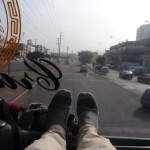
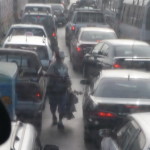
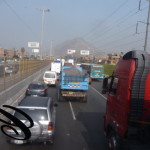
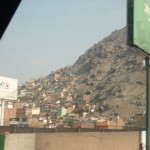
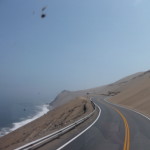
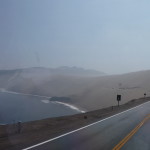
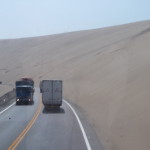
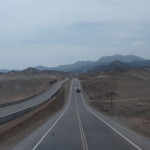
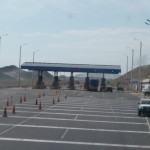
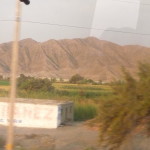
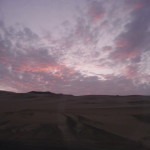
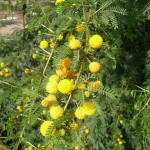
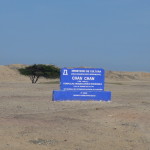
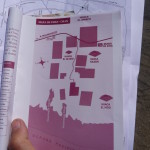
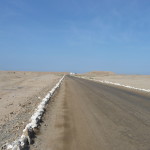
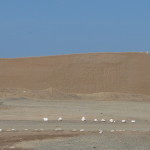
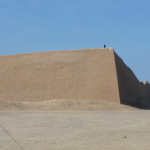
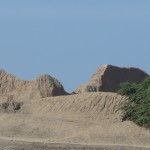
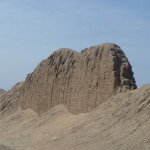
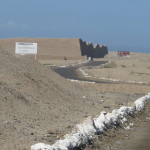
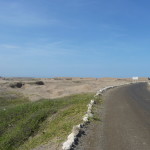
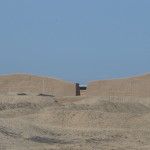
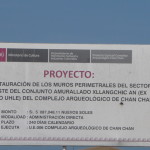
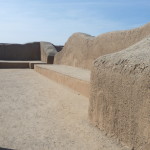
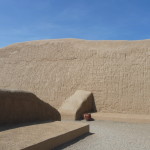
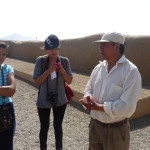
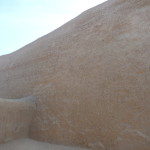
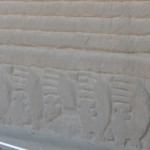
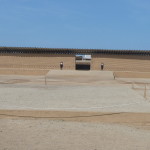
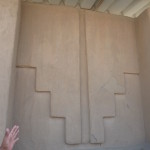
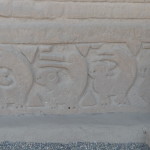
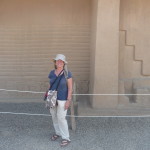
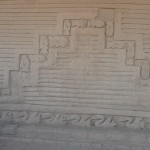
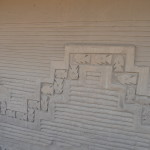
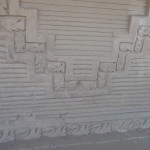
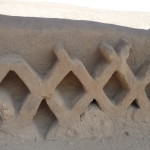
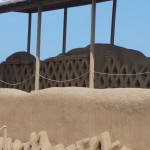
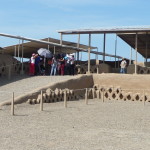
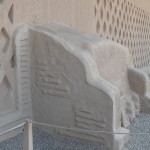
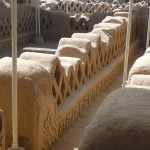
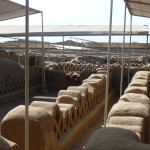
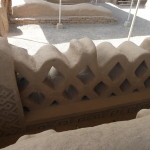
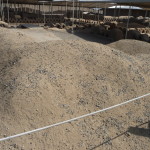
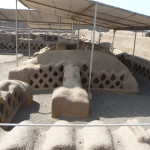
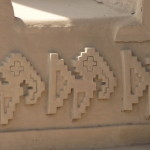
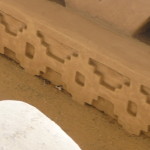
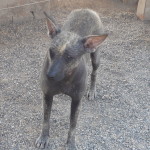
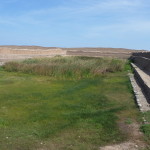
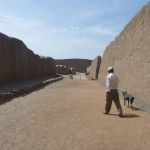
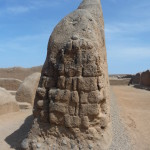
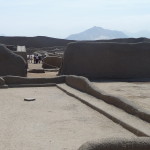
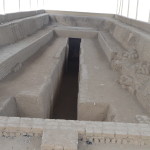
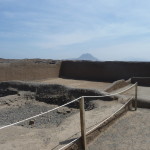
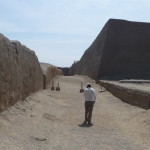
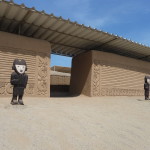
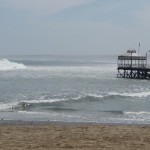
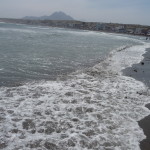
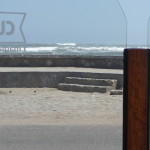
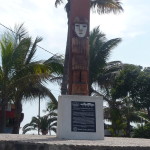
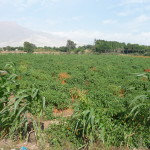
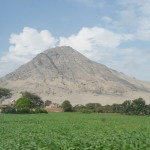
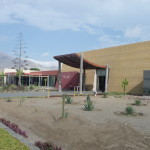
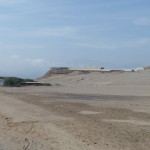
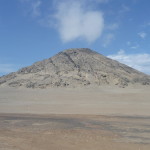
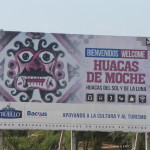
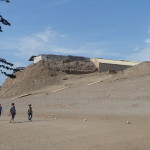
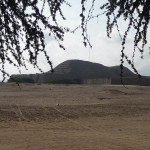
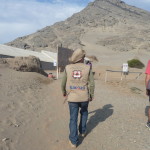
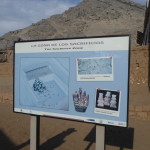
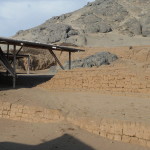
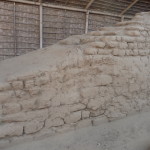
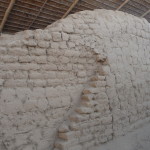
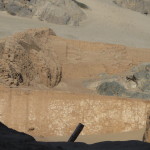
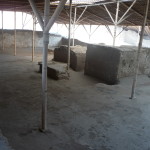
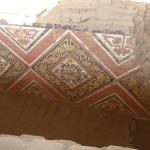
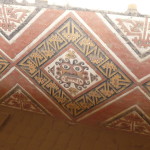
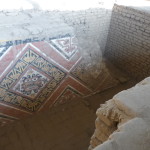

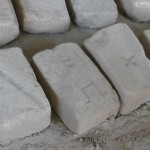
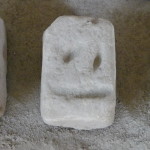
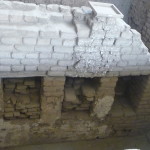
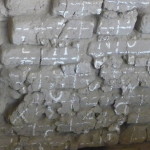
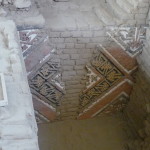
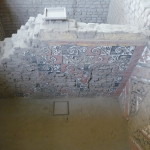
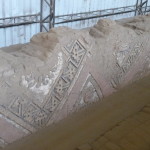
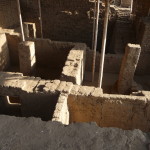
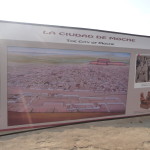
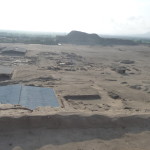
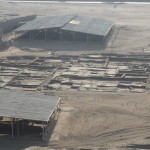
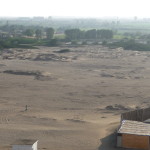
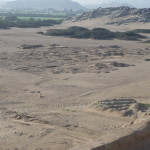
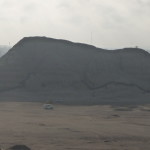
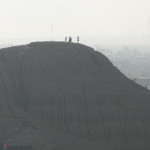
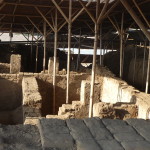
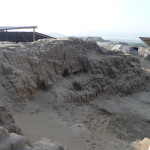
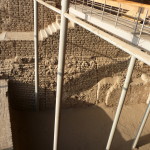
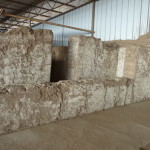
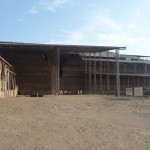
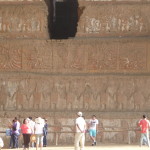
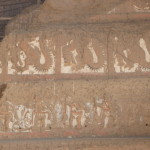
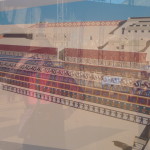
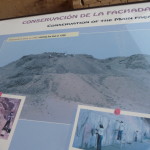
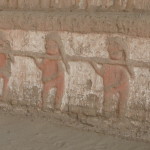
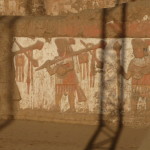
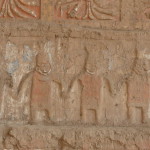
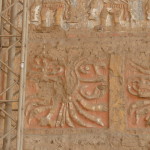
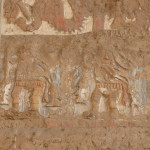
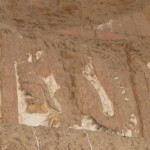
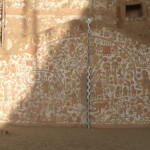
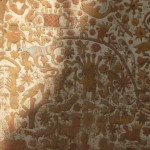
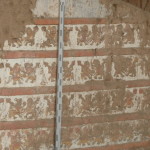
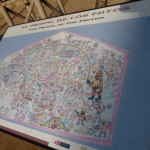
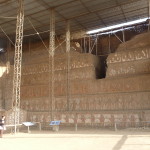
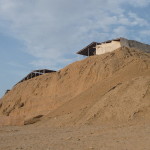
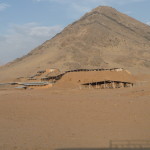
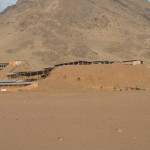
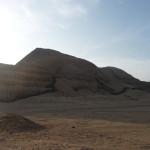
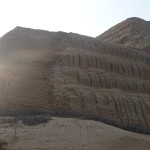
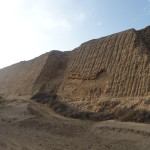
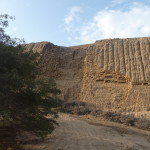
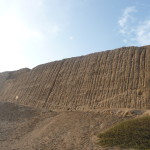
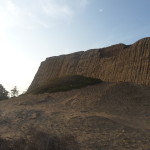
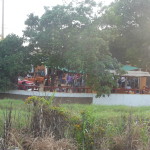
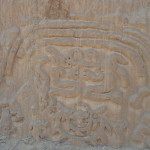
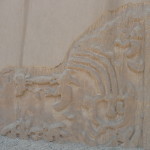
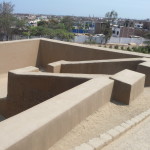
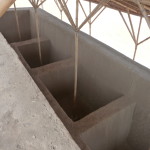
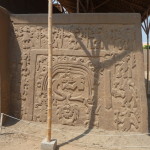
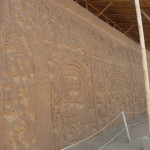
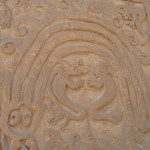
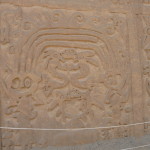
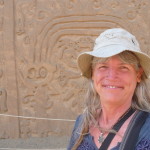
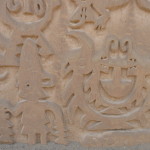
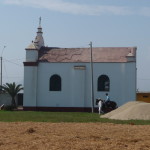
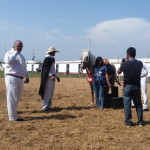
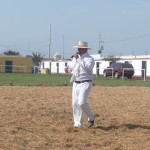
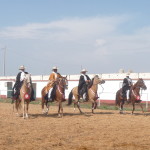
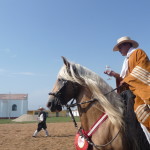
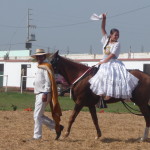
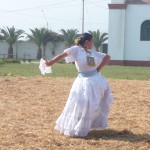
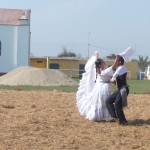
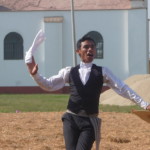
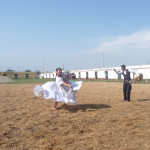
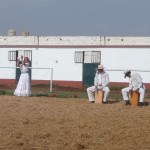
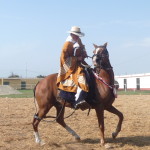
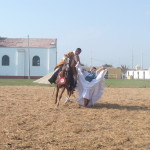
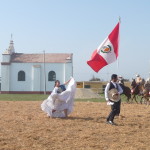
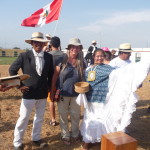
Hi Brenda
While you were in Calca, you mentioned that you were doing a number of (solo?) ceremonies. Would you mind sharing what type of ceremonies you were doing?
Hi Morris,
Sometime soon, I will begin to share many of my experiences during those ceremonies, but I have not yet found time to do so.
Meanwhile, yes, I would be glad to tell you what type of ceremonies I was doing. Just before moving to Calca, I had done three Huachuma ceremonies (San Pedro Cactus) … doing them with a group and a facilitator. They were deep and profound, and I knew that I needed to continue that journey.
So, after getting settled in to my home, I began to experiment with doing Huachuma ceremonies all by myself. After a couple of ceremonies I stumbled onto a perfect balance of medicine, combined with Cacao, that connected me with my heart in ways that I had never before been able to do. I was so connected to Higher Energies that I felt my guides channeling to me nearly every ceremony after that, often guiding me through deep emotional processing. (So, in some ways, I was never doing those ceremonies alone) …
Prior to leaving Calca, I had done in the neighborhood of 85 Huachuma ceremonies, most of them by myself, and a few of them with one or two select friends.
The plant medicine took me extremely deep at times, but I had to do the actual work myself. I was taken into many deep fears and blockages that had kept my heart closed. Once I moved into them and through them, I began to have profound heart opening experiences.
One day, perhaps very soon, I will begin to share many of those experiences in my blog. Right now, I am settling down in Mancora to spend the next week beginning to write a little (perhaps) …
Thanks for the question. I hope all is well with you
-Brenda
I suspected that it might be Huachuma as that plant medicine seems to be the safest to take on your own (but as you said, you’re never completely alone…). 85 ceremonies – wow – that is a lot of healing work you have undertaken – frankly I’m jealous but in the nicest possible way! I can’t think of a better place in the world to do what you’ve just accomplished. The Sacred Valley is an amazing place to do the hard work that is involved.
No wonder you said that you’re not the same person that you were when you arrived.
Kudos to you for making that commitment to yourself.
Thanks Morris … it has been an incredible long journey, but so worth it. :)